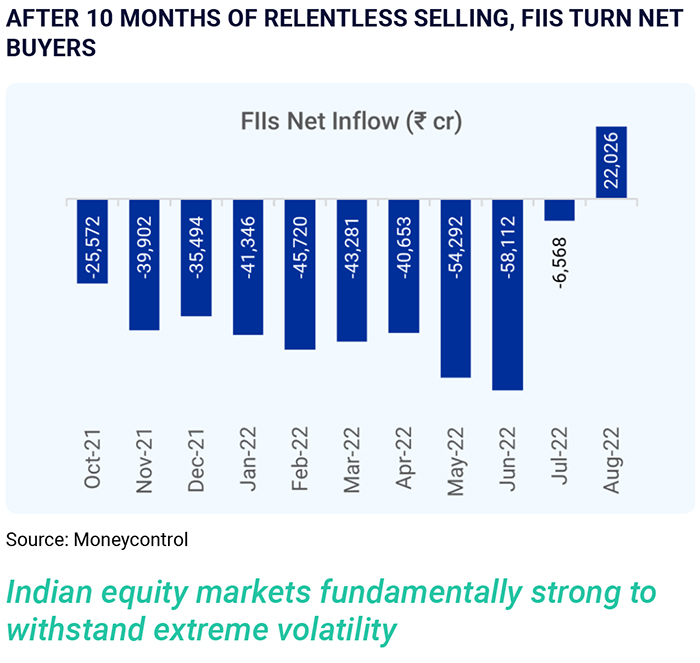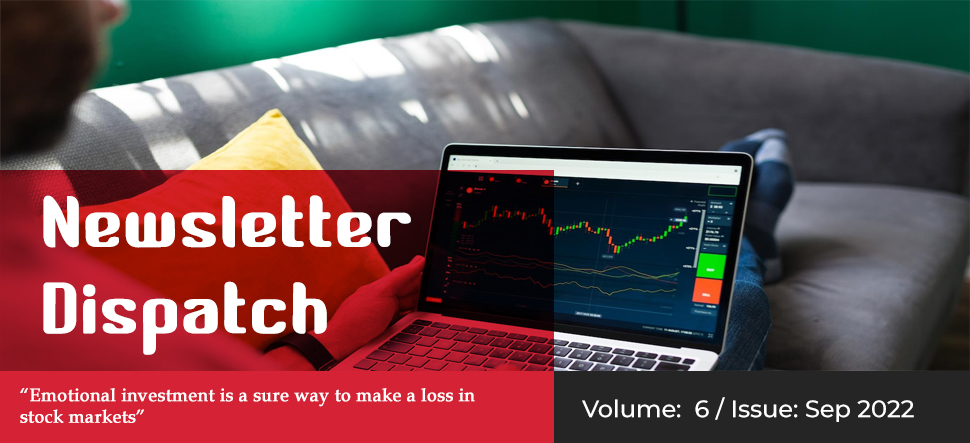The equity market had convinced itself following the July FOMC meeting
that after two consecutive quarters of negative real GDP, the US Fed shall
make a "dovish" pivot. However, cracks emerged following the FOMC
chairman Jay Powell’s speech at the Jackson Hole symposium, reiterating
its stance to raise interest rates until the inflation is under control.
This led to a major sell-off in equity markets across the globe. Indian
markets were no exception. Beyond the kneejerk reaction in the equity
markets, the long-term risk of capital outflows from emerging economies
like India re-surfaces.
However, Indian markets witnessed a steep rebound in the next few days
and recovered most of the losses while other major global markets
continued to bleed. The resilience shown by the Indian markets reflects
robust macroeconomic fundamentals. India is one of the fastest growing
economies, while other major economies are heading towards recession
or growing at a moderate pace. Another positive for the Indian economy
has been softening of commodity prices and easing of supply chain
pressures which has led to an easing of imported inflation (CPI for India
peaked in April 2022). Also, the foreign exchange reserves of $561 bn
provide a cushion against any external shock. All the above fundamentals
have reinstated the confidence of investors in the Indian market which is
reflected in surging portfolio inflows by foreign institutional investors
(FIIs).


